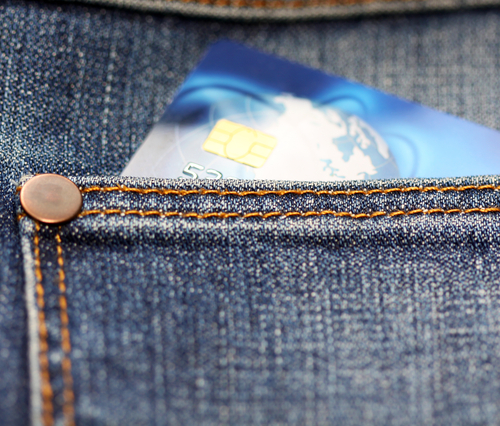February 28, 2015 – On the last day of February Brian Wilkins is our guest blogger. A journalism graduate of Arizona State University, he has worked as a radio broadcaster and banking industry professional. Today Brian owns his own business and writes for newspapers, magazines and blogs like 21st Century Tech. He lives off-the-grid and hasn’t owned a TV in more than six years. Despite that he sure knows a lot about technology and the future. Enjoy his contribution.
————
A report released in September by consulting firm TechSci Research predicted that global sales for “smart clothes” will reach 275 million units by 2019. Where we see smart watches and glasses dominating the wearable-technology headlines today, expect to see all kinds of wearables that more resemble the clothes you put on in the near future.
Many of us are early adopters of the latest trendy technology – think the latest iPhone, Android smartphone or video game device. But what people wear is more personal than picking the latest tablet. Wearable tech that goes beyond glasses and watches, that is, smart clothing, will not only have to look and feel good, but must serve a necessary purpose. So much of what is being proposed as wearables today may not catch on. But some will and here is what’s currently out there.
Smart Shirts
Georgia Tech University and SensaTex Inc., received initial funding from the U.S. Navy back in 1996 to create a “smart shirt” for battlefield operations. The Georgia Tech Wearable Motherboard, (GTWM) is laced with interconnected optical fibers that monitor vital body functions. Smart Shirt Sensors attach to the body and transmit abrupt changes in a wearer’s pulse rate, body temperature, and other vital signs. For a wearer struck by a bullet medical personnel can almost instantaneously detect its exact location or any other penetrating wound making treatment faster. For civilians the practical uses of GTWM include the monitoring of the elderly, premature babies, and children and adults with complex medical conditions.
Similar products like OMsignal Biometric Smartwear are being marketed to fitness buffs who want detailed reports on calories burned, breathing rates and miles walked. Additionally, Victoria’s Secret is selling a bra that monitors heart rate during high-impact workouts. And for the runner there are Sensoria Smart Socks which track speed, distance and weight distribution to help perfect technique.
RFID – The Good and The Bad
By now we are all becoming familiar with radio frequency tags. These are used to track shipments, to manage inventory in warehouses, to protect against theft in retail, and for many other applications. Known as radio-frequency identification or RFID the technology’s use is ever expanding.
For example in Michigan, New York, Washington and Vermont, RFID technology is incorporated into driver’s licenses so travelers can go back-and-forth between the U.S. and Canada without a passport. California nearly became the fifth RFID driver’s license state in 2013, but privacy groups forced the state legislature to put the plans on hold. RFID-enabled credit cards power Visa Paywave, Discover Zip, and other express payment methods that are becoming more popular everyday.
The convenience of RFID cards comes with risk. Virtual pickpockets can steal personal data using scanners and smartphone apps that detect cards when in close proximity to a person’s wallet or purse. A startup called Betabrand has teamed with anti-virus firm Symantec to launch a new clothing line called READY Jeans. These come with two pockets made from RFID-blocking fabric to keep data safe from thieves. The company also makes blazers with RFID-proof pockets. Both items will be available for purchase spring 2015.
The Superfluous Solar Jacket?
Psychologists have termed a new disorder called nomophobia, the fear of not having access to your cell phone. One poll by mobile security firm SecurEnvoy found that, in the United States, 70% of women and 61% of men are nomophobes.
Eco-chic design firm Silvrling is mining the opportunity with its GO Utility Vest, something you wear that comes with solar panels on the two front pockets so you can keep your mobile phones charged. A high-tech hoodie, the vest is thick enough to keep you warm on chilly days, and comes in a variety of colors. Is it practical? Would you have to stay outside all day to reap the benefits? And what about days when the sun doesn’t shine, or evenings? Currently priced at $600 U.S. the vest is more novelty than practical. And when you check out current battery performance on smart phones (about 8 hours of usage before a battery drains) it would seem this is more novelty than good investment.
What’s described here is just the beginning. Smart clothes are part of the present and will be a growing presence in the near future fashion marketplace. Will all this exposure to electromagnetic frequencies create future health risks? Will hackers breach smart clothing the way they have hacked into all other digital technology? We won’t have those answers right away but widespread adoption of these new technologies is sure to speed up in the coming years.
Postscript
To add to Brian’s article I relate my own personal experience with RFID theft which has led me to buy a shoulder bag containing electromagnetic shielding to deny those electronic pickpockets. The bag I bought is a deterrent to regular pickpockets as well. The exterior material is exomesh, containing a wrapper of fine steel wires. The lockable and adjustable shoulder strap is made from the same material. It is virtually knife and shears-proof. Other safety features include multiple lockable zippered compartments. Backpacks, suitcases and wearables are all incorporating exomesh into designs for security conscious travellers. You can check out the line of products at Pacsafe.












